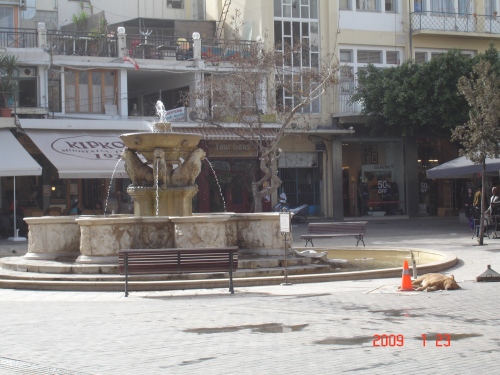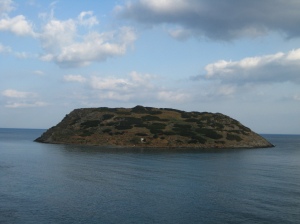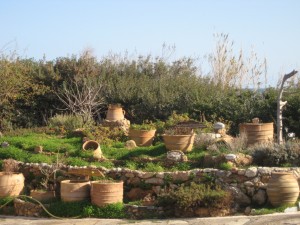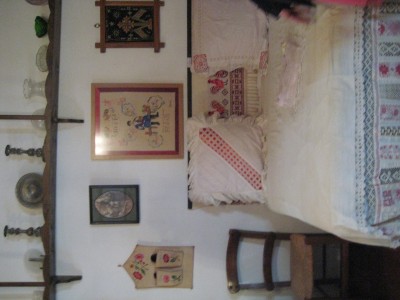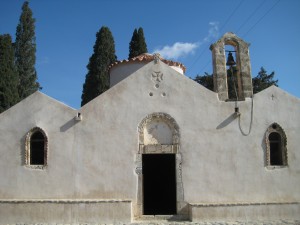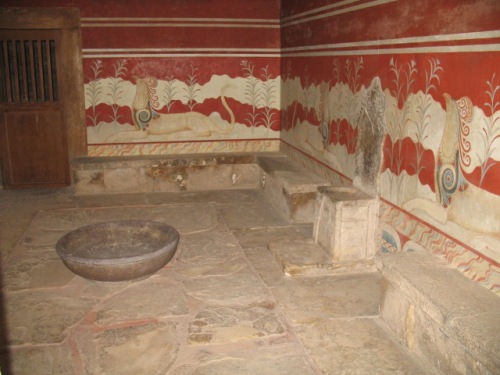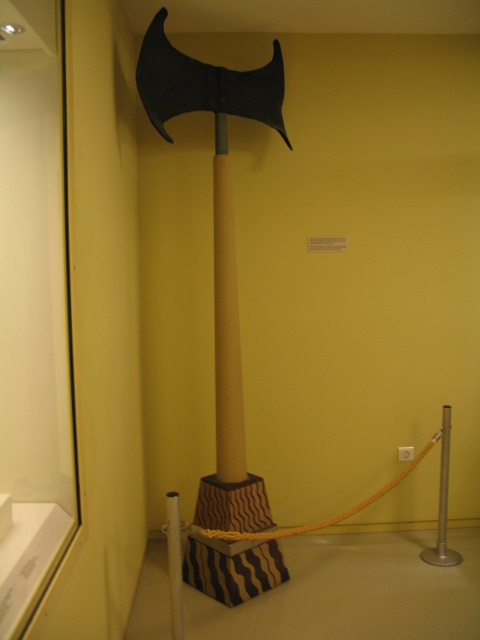This morning began with a short walk to the Sitia Archaeological Museum. The highlight of their collection was the Palaiskastro Kouros, a small ivory man, and the theories surrounding him were explained to us by Kristen. We were all in awe of the detail that was put into him, despite the fragmentation and burn marks. The veins in his hands and fingernails were so lovingly carved. There were also several interesting Linear A tablets. 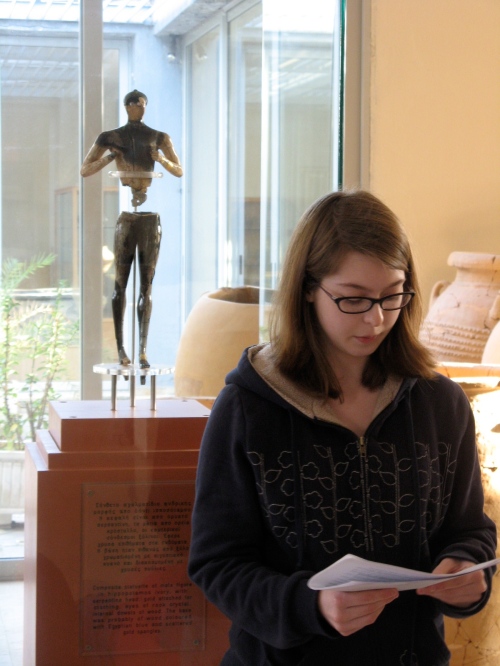
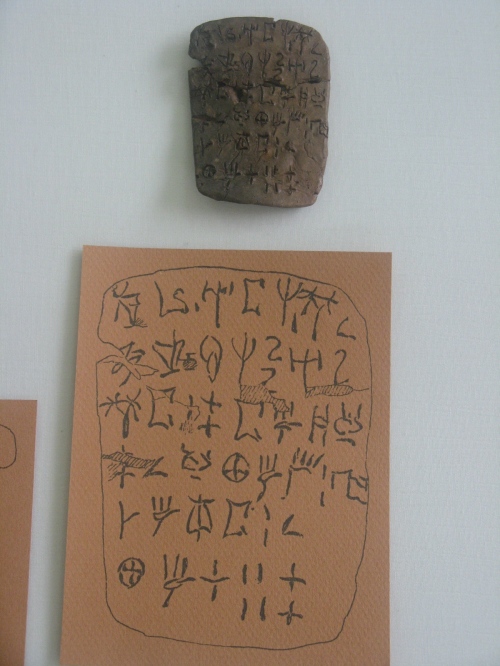
After braving winding roads we reached Toploy Monastery. Unfortunately no pictures were allowed of the church at all, so all we could manage was this drive-by photo.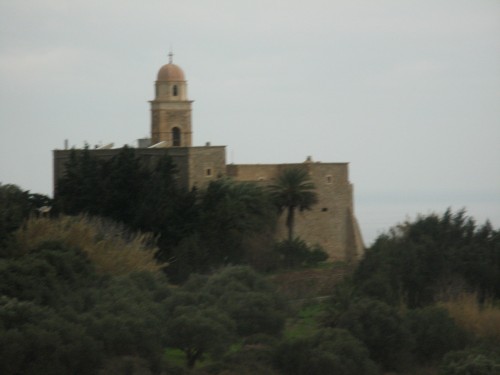
Toploy means “cannon ball” in Turkish due to fortress-like construction of the monastery. It was dedicated to the Virgin Mary and Saint John the Divine by the Kornaros family. In 1646 the Knights of Malta came to protect it from the Turkish, but instead they looted the place. In 1766 the northern section of the building collapsed and was rebuilt. Once inside the church it was obvious that it housed one of the most beautiful icons that we have seen yet. Pained by Yianis Cornados in 1770 at the age of 25. This particular icon is called “Great art Thou oh Lord.” Only 10 of his icons have survived, Toploy Monastery owns two of them. It depicted various stories from the Greek Orthodox prayer for which it is named. Even the people in the background were shaded and showed expression. The sky included constellations and the gold leaf shined and made the piece come alive. At times it seems that the detail was so fine because he used a brush with a single hair.
After the monastery, we traveled to the Minoan town site of Palaiskastro (Greek for “old Castle”), and it’s situated right along the coastline. The settlement was excavated from 1902-1906, but partially backfilled to protect the fragile structures. The town features shrines, wells, roads, and houses entered on the first floor (as opposed to most Minoan houses entered from the second story). It was great to walk through the three rooms of House #5 where the Palaiskastro Kouros was found in pieces by Sandy Macgillivray in ’88, ’89, and ’90. Unfortunately for the residents of the this settlement, evidence was found that the site was deliberately torched with brush and plant material. 
But we were absolutely starving, so we picnicked on the beach shore, at Kato Zakros, and ate the best tasting sandwiches, nuts and olives, and baklava until we were stuffed! A pretty cool sight was a shipwrecked boat of 200 people that had to evacuate. They’ll have to wait for better weather to bring special machinery to remove it from the sand bars, so we just laughed at the idea of being shipwrecked on a deserted beach. 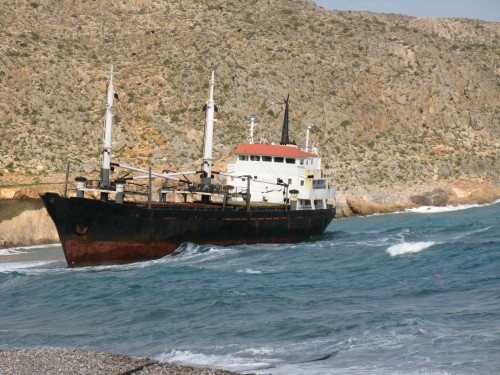
Then we walked to the Palace of Kato Zakros, the smallest of the four Minoan palace complexes and the last to be excavated, in 1961 by Nicholas Platon. This site is so special because it is the only perfectly preserved Minoan one, and over 10,000 artifacts were discovered in the palace’s 300 rooms. We entered the complex as the Minoans would’ve have done over 3600 years ago, by way of the well-preserved road connecting it to the harbor. We looked in-depth at the Kitchen-and-Dining Room, Royal Megara, Hall of the Cistern, and West Wing Shrine. Kato Zakros was first built in 1900 BCE, rebuilt in 1600 BCE, and destroyed by a fire in 1450 BCE. It was a rich find for archaeologists as precious rock-crystal and bull rhyta, 30 kilogram bronze ingots originally from Cyprus, and elephant tusks for ceremonial carving from Syria were found inside. 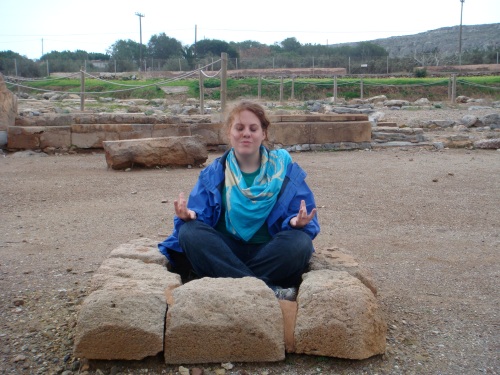
We then took a very relaxing hike the the Gorge of the Dead, or as the signs say “Dead’s Gorge.” (Don’t worry Moms and Dads, the only danger was walking in fresh goat poop.) The trail took us along the river bed and we were followed by at least two herds of goats, their bells echoing through the gorge. Some girls even “Kri-Kried” their way up the gorge walls and were delighted by the find of a goat carcass. 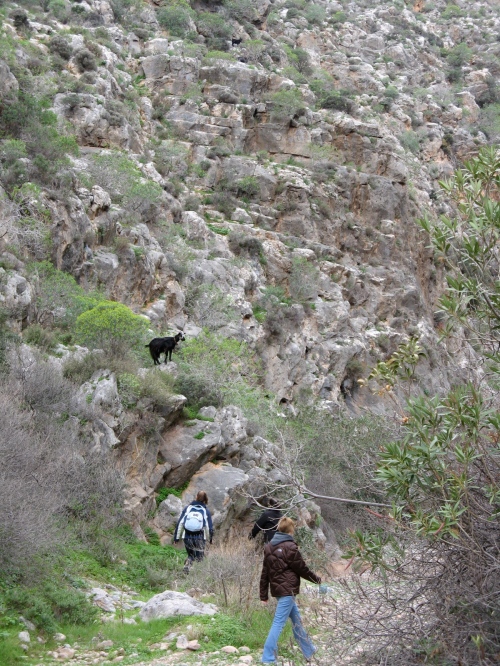

-Mesa and Caitlin














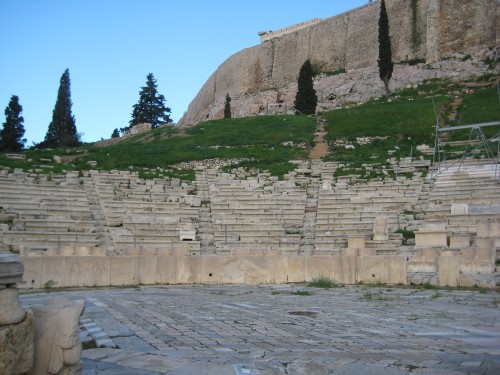
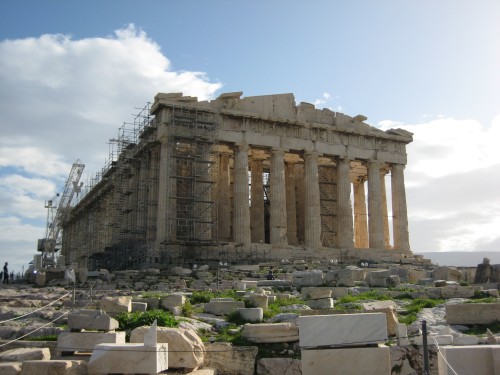
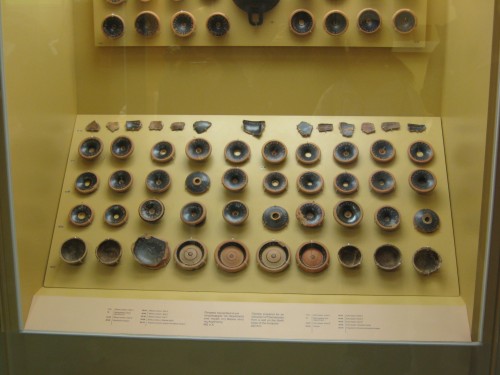



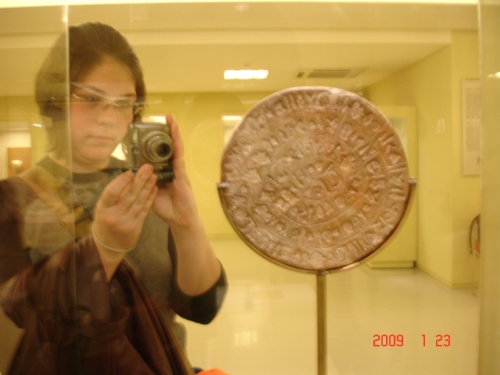 Our morning started off with a short walk to the Herakleion Museum in the rain. We had visited it previously but had not seen all the exhibits. So, today we examined the remaining artifacts. We focused our attention on the Phaistos Disk, which is a terra cotta disk with Linear A writing engraved on it. This artifact has been described as unique and per Jerome Isenberg a possible counterfeit. His theory is based off of the fact that the edges of the disk are very smooth and the symbols on the disk resemble letters of modern languages. Also, the excavator had not recorded the find until the following day, which has created the most suspicion. Isenberg filed a request for carbon dating to be done on the piece but it was denied. To finish our day at the museum we did a group activity to further investigate the relationship between nature, religion, architecture and materials used in the art of the time period.
Our morning started off with a short walk to the Herakleion Museum in the rain. We had visited it previously but had not seen all the exhibits. So, today we examined the remaining artifacts. We focused our attention on the Phaistos Disk, which is a terra cotta disk with Linear A writing engraved on it. This artifact has been described as unique and per Jerome Isenberg a possible counterfeit. His theory is based off of the fact that the edges of the disk are very smooth and the symbols on the disk resemble letters of modern languages. Also, the excavator had not recorded the find until the following day, which has created the most suspicion. Isenberg filed a request for carbon dating to be done on the piece but it was denied. To finish our day at the museum we did a group activity to further investigate the relationship between nature, religion, architecture and materials used in the art of the time period. 

